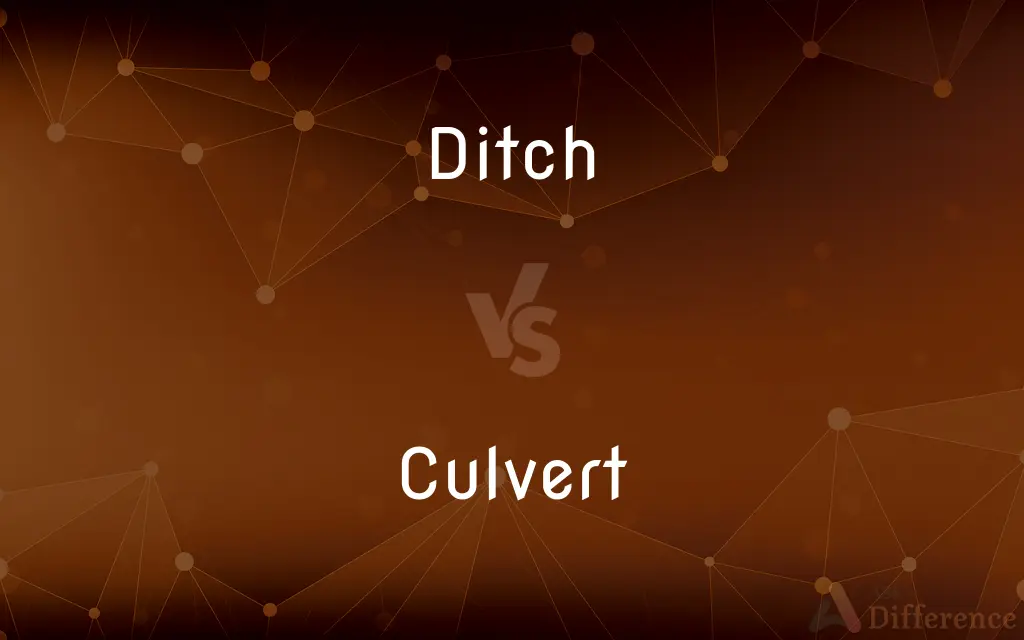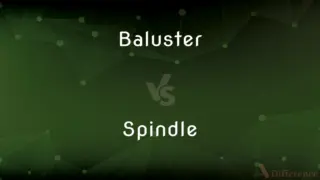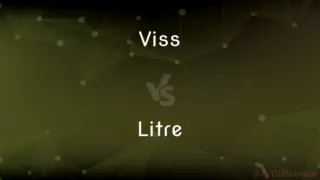Ditch vs. Culvert — What's the Difference?
Edited by Tayyaba Rehman — By Urooj Arif — Updated on April 5, 2024
A ditch is a narrow channel dug in the ground, typically used for drainage, while a culvert is a tunnel carrying a stream or open drain under a road or railway.

Difference Between Ditch and Culvert
Table of Contents
ADVERTISEMENT
Key Differences
A ditch is essentially a simple, narrow excavation in the ground designed primarily for drainage or to carry water away from a specific area. Its main function is to prevent waterlogging and to direct water flow. On the other hand, a culvert is a structure that allows water to flow under a road, railway, trail, or similar obstruction from one side to the other.
Ditches are simple and cheaper to construct, often requiring just the movement of soil to create. Culverts can be made from a variety of materials including steel, concrete, and plastic, and they serve as a tunnel for water streams, drainage systems, or for small animals to pass through.
Ditches are open to the sky and can vary significantly in size and depth, depending on their intended purpose, whether it is for agricultural drainage, road drainage, or as a boundary marker. Culverts, however, are enclosed structures and need to be carefully designed to withstand traffic and environmental loads. They are more complex and costly than ditches, requiring specific materials for construction and often engineering expertise to design and install.
While ditches primarily focus on surface water management, culverts are integral to infrastructure, allowing for the passage of water under man-made structures and thereby preventing erosion and flooding. They work together with ditches and other drainage systems to manage water flow in an area effectively. Culverts also play a role in habitat connectivity, allowing wildlife to cross under roads safely. This function highlights the environmental consideration in culvert design, which goes beyond simple water management to include ecological concerns.
Comparison Chart
Purpose
For drainage, to carry water away from an area.
To allow water flow under roads or railways.
ADVERTISEMENT
Construction
Open air, simple excavation.
Enclosed tunnel, made of concrete, steel, or plastic.
Location
Alongside roads, fields, between properties.
Under roads, railways, trails.
Design
Simple and varies in size; mainly open to the sky.
Structurally designed to withstand loads, enclosed.
Cost
Generally lower, due to simplicity.
Higher, due to materials and engineering requirements.
Function
Manages surface water.
Ensures passage of water and wildlife under obstructions.
Compare with Definitions
Ditch
A narrow channel dug for drainage.
The farmer dug a ditch along the field's edge for excess water.
Culvert
A tunnel carrying water under a road.
The culvert under the highway allows the stream to flow uninterrupted.
Ditch
Not covered, visible.
The new ditch along the path was filled with rainwater.
Culvert
Positioned under roads, railways.
A new culvert was necessary for the road expansion project.
Ditch
Used to prevent waterlogging.
Ditches by the roadside help prevent flooding during heavy rains.
Culvert
Prevents erosion and allows wildlife passage.
The culvert serves as a safe passage for small animals under the road.
Ditch
Requires moving soil, no covering.
They decided to dig a ditch to solve the drainage issue.
Culvert
Made from durable materials.
The concrete culvert was installed to last for decades.
Ditch
Cheaper, easier to create.
Installing ditches is a cost-effective way to manage water flow.
Culvert
Engineered to withstand environmental loads.
The culvert design was revised to handle increased water flow.
Ditch
A ditch is a small to moderate divot created to channel water. A ditch can be used for drainage, to drain water from low-lying areas, alongside roadways or fields, or to channel water from a more distant source for plant irrigation.
Culvert
A culvert is a structure that allows water to flow under a road, railroad, trail, or similar obstruction from one side to the other. Typically embedded so as to be surrounded by soil, a culvert may be made from a pipe, reinforced concrete or other material.
Ditch
A long narrow trench or furrow dug in the ground, as for irrigation, drainage, or a boundary line.
Culvert
A tunnel carrying a stream or open drain under a road or railway.
Ditch
To dig or make a long narrow trench or furrow in.
Culvert
Channel (a stream or drain) through a culvert
A culverted drain
We have asked for the river to be culverted
Ditch
To surround with a long narrow trench or furrow.
Culvert
A sewer or drain crossing under a road or embankment.
Ditch
To drive (a vehicle) into a long narrow trench, as one beside a road.
Culvert
The part of a road or embankment that passes over such a sewer or drain.
Ditch
To derail (a train).
Culvert
The channel or conduit for such a sewer or drain.
Ditch
To get rid of; discard
Ditched the old yard furniture.
Culvert
A channel crossing under a road or railway for the draining of water.
Ditch
To get away from (a person, especially a companion).
Culvert
To channel (a stream of water) through a culvert.
Ditch
To discontinue use of or association with
Ditch the job at the hamburger stand.
Culvert
A transverse drain or waterway of masonry under a road, railroad, canal, etc.; a small bridge.
Ditch
To skip (class or school).
Culvert
A transverse and totally enclosed drain under a road or railway
Ditch
To crash-land (an aircraft) on water.
Ditch
To dig a ditch.
Ditch
To crash-land in water. Used of an aircraft or a pilot.
Ditch
A trench; a long, shallow indentation, as for irrigation or drainage.
Digging ditches has long been considered one of the most demanding forms of manual labor.
The truck careered off the road into a ditch.
Ditch
(Ireland) A raised bank of earth and the hedgerow on top.
Ditch
Alternative form of deech
Ditch
(transitive) To discard or abandon.
Once the sun came out we ditched our rain-gear and started a campfire.
Why did you ditch your last boyfriend? He was so nice to you.
Ditch
To deliberately crash-land an airplane on water.
When the second engine failed, the pilot was forced to ditch; their last location was just south of the Azores.
Ditch
(ambitransitive) To deliberately not attend classes; to play hookey.
The truant officer caught Louise ditching with her friends, and her parents were forced to pay a fine.
Ditch
(intransitive) To dig ditches.
Enclosure led to fuller winter employment in hedging and ditching.
Ditch
(transitive) To dig ditches around.
The soldiers ditched the tent to prevent flooding.
Ditch
(transitive) To throw into a ditch.
The engine was ditched and turned on its side.
Ditch
Alternative form of deech
Ditch
A trench made in the earth by digging, particularly a trench for draining wet land, for guarding or fencing inclosures, or for preventing an approach to a town or fortress. In the latter sense, it is called also a moat or a fosse.
Ditch
Any long, narrow receptacle for water on the surface of the earth.
Ditch
To dig a ditch or ditches in; to drain by a ditch or ditches; as, to ditch moist land.
Ditch
To surround with a ditch.
Ditch
To throw into a ditch; as, the engine was ditched and turned on its side.
Ditch
To dig a ditch or ditches.
Ditch
A long narrow excavation in the earth
Ditch
Any small natural waterway
Ditch
Forsake;
Ditch a lover
Ditch
Throw away;
Chuck these old notes
Ditch
Sever all ties with, usually unceremoniously or irresponsibly;
The company dumped him after many years of service
She dumped her boyfriend when she fell in love with a rich man
Ditch
Make an emergency landing on water
Ditch
Crash or crash-land;
Ditch a car
Ditch a plane
Ditch
Cut a trench in, as for drainage;
Ditch the land to drain it
Trench the fields
Common Curiosities
What is a culvert?
A culvert is a tunnel structure that allows water to pass under a road, railway, or trail.
Can ditches and culverts work together?
Yes, they often work together in drainage systems to manage water flow and prevent flooding.
How do ditches and culverts differ in construction?
Ditches are simple, open excavations, while culverts are enclosed tunnels made of materials like concrete or steel.
How does the purpose of a ditch differ from a culvert?
Ditches are primarily for drainage and water management, whereas culverts allow for water passage under obstructions.
What is a ditch?
A ditch is a narrow channel dug in the ground to carry water away, typically used for drainage.
Why are culverts important for infrastructure?
Culverts prevent water from eroding the ground under roads and railways, maintaining stability and safety.
What materials are used to construct culverts?
Culverts can be constructed from concrete, steel, plastic, or other durable materials.
What is the main advantage of a culvert over a simple bridge?
Culverts are often less expensive and easier to maintain than bridges, suitable for small watercourses.
Can wildlife use culverts?
Yes, culverts can be designed to allow wildlife to safely cross under roads and railways.
Are ditches always open to the air?
Yes, ditches are typically open to the sky, which distinguishes them from culverts.
What role do ditches play in agriculture?
Ditches are crucial in agriculture for field drainage, preventing waterlogging and soil erosion.
How do environmental considerations affect culvert design?
Environmental considerations include ensuring culverts do not disrupt local ecosystems and provide safe wildlife passages.
Is it possible to convert a ditch into a culvert?
Yes, a ditch can be converted into a culvert by installing an appropriate tunnel structure, improving water management and safety.
Are culverts a recent development?
No, culverts have been used for centuries but have evolved in design and materials.
Do ditches require maintenance?
Yes, ditches need regular clearing to remove debris and ensure effective drainage.
Share Your Discovery

Previous Comparison
Baluster vs. Spindle
Next Comparison
Viss vs. LitreAuthor Spotlight
Written by
Urooj ArifUrooj is a skilled content writer at Ask Difference, known for her exceptional ability to simplify complex topics into engaging and informative content. With a passion for research and a flair for clear, concise writing, she consistently delivers articles that resonate with our diverse audience.
Edited by
Tayyaba RehmanTayyaba Rehman is a distinguished writer, currently serving as a primary contributor to askdifference.com. As a researcher in semantics and etymology, Tayyaba's passion for the complexity of languages and their distinctions has found a perfect home on the platform. Tayyaba delves into the intricacies of language, distinguishing between commonly confused words and phrases, thereby providing clarity for readers worldwide.
















































